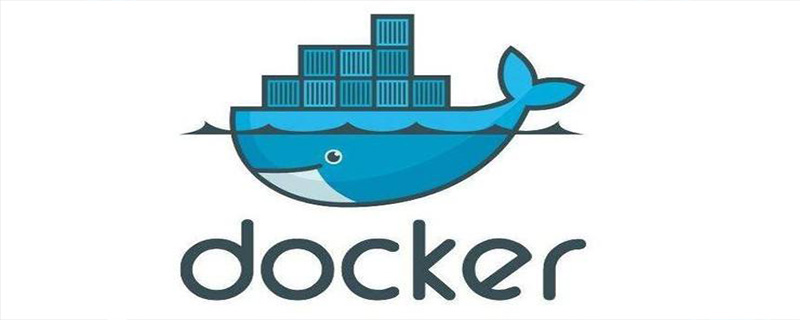docker reports error exited(137)

Docker container failed to start, error: Exited (137) *** ago, such as
Exited (137) 16 seconds ago
at this time No logs can be found through docker logs. From mesos, there is only one sentence related to stderr:
I0409 16:56:26.408077 8583 executor.cpp:736] Container exited with status 137
Through docker inspect checks that the container status is
"State": {
"Status": "exited",
"Running": false,
"Paused": false,
"Restarting": false,
"OOMKilled": true,
"Dead": false,
"Pid": 0,
"ExitCode": 137,
"Error": "",
"StartedAt": "2019-04-09T08:50:48.058583459Z",
"FinishedAt": "2019-04-09T08:50:55.456317695Z"
},It can be seen that it is because of OOMKilled. Check the oom log through journalctl as follows:
# journalctl -k | grep -i -e memory -e oom Apr 09 16:00:14 cdp-test-server-05.bj kernel: java invoked oom-killer: gfp_mask=0xd0, order=0, oom_score_adj=0 Apr 09 16:00:14 cdp-test-server-05.bj kernel: [<ffffffff8c3ba524>] oom_kill_process+0x254/0x3d0 Apr 09 16:00:14 cdp-test-server-05.bj kernel: [<ffffffff8c435346>] mem_cgroup_oom_synchronize+0x546/0x570 Apr 09 16:00:14 cdp-test-server-05.bj kernel: [<ffffffff8c3badb4>] pagefault_out_of_memory+0x14/0x90 Apr 09 16:00:14 cdp-test-server-05.bj kernel: memory: usage 524288kB, limit 524288kB, failcnt 8430 Apr 09 16:00:14 cdp-test-server-05.bj kernel: memory+swap: usage 524288kB, limit 1048576kB, failcnt 0 Apr 09 16:00:14 cdp-test-server-05.bj kernel: Memory cgroup stats for /docker/3aafdee2b919fa936815fbb88ebd8bb3131c185690284491f583c62ff382b1fe: cache:20KB rss:524268KB rss_huge:0KB mapped_file:8KB swap:0KB inactive_anon:0KB active_anon:524236KB inactive_file:8KB active_file:8KB unevictable:0KB Apr 09 16:00:14 cdp-test-server-05.bj kernel: [ pid ] uid tgid total_vm rss nr_ptes swapents oom_score_adj name Apr 09 16:00:14 cdp-test-server-05.bj kernel: Memory cgroup out of memory: Kill process 10768 (java) score 1021 or sacrifice child
The reason is that the container is only allocated 512M, but requires 1G (for example, -Xms1G is set in the configuration file -Xmx1G)
For more related tutorials, please pay attention to the docker tutorial column on the PHP Chinese website.
The above is the detailed content of docker reports error exited(137). For more information, please follow other related articles on the PHP Chinese website!

Hot AI Tools

Undresser.AI Undress
AI-powered app for creating realistic nude photos

AI Clothes Remover
Online AI tool for removing clothes from photos.

Undress AI Tool
Undress images for free

Clothoff.io
AI clothes remover

Video Face Swap
Swap faces in any video effortlessly with our completely free AI face swap tool!

Hot Article

Hot Tools

Notepad++7.3.1
Easy-to-use and free code editor

SublimeText3 Chinese version
Chinese version, very easy to use

Zend Studio 13.0.1
Powerful PHP integrated development environment

Dreamweaver CS6
Visual web development tools

SublimeText3 Mac version
God-level code editing software (SublimeText3)

Hot Topics
 How to exit the container by docker
Apr 15, 2025 pm 12:15 PM
How to exit the container by docker
Apr 15, 2025 pm 12:15 PM
Four ways to exit Docker container: Use Ctrl D in the container terminal Enter exit command in the container terminal Use docker stop <container_name> Command Use docker kill <container_name> command in the host terminal (force exit)
 How to copy files in docker to outside
Apr 15, 2025 pm 12:12 PM
How to copy files in docker to outside
Apr 15, 2025 pm 12:12 PM
Methods for copying files to external hosts in Docker: Use the docker cp command: Execute docker cp [Options] <Container Path> <Host Path>. Using data volumes: Create a directory on the host, and use the -v parameter to mount the directory into the container when creating the container to achieve bidirectional file synchronization.
 How to restart docker
Apr 15, 2025 pm 12:06 PM
How to restart docker
Apr 15, 2025 pm 12:06 PM
How to restart the Docker container: get the container ID (docker ps); stop the container (docker stop <container_id>); start the container (docker start <container_id>); verify that the restart is successful (docker ps). Other methods: Docker Compose (docker-compose restart) or Docker API (see Docker documentation).
 How to check the name of the docker container
Apr 15, 2025 pm 12:21 PM
How to check the name of the docker container
Apr 15, 2025 pm 12:21 PM
You can query the Docker container name by following the steps: List all containers (docker ps). Filter the container list (using the grep command). Gets the container name (located in the "NAMES" column).
 How to start mysql by docker
Apr 15, 2025 pm 12:09 PM
How to start mysql by docker
Apr 15, 2025 pm 12:09 PM
The process of starting MySQL in Docker consists of the following steps: Pull the MySQL image to create and start the container, set the root user password, and map the port verification connection Create the database and the user grants all permissions to the database
 How to start containers by docker
Apr 15, 2025 pm 12:27 PM
How to start containers by docker
Apr 15, 2025 pm 12:27 PM
Docker container startup steps: Pull the container image: Run "docker pull [mirror name]". Create a container: Use "docker create [options] [mirror name] [commands and parameters]". Start the container: Execute "docker start [Container name or ID]". Check container status: Verify that the container is running with "docker ps".
 How to update the image of docker
Apr 15, 2025 pm 12:03 PM
How to update the image of docker
Apr 15, 2025 pm 12:03 PM
The steps to update a Docker image are as follows: Pull the latest image tag New image Delete the old image for a specific tag (optional) Restart the container (if needed)
 How to view logs from docker
Apr 15, 2025 pm 12:24 PM
How to view logs from docker
Apr 15, 2025 pm 12:24 PM
The methods to view Docker logs include: using the docker logs command, for example: docker logs CONTAINER_NAME Use the docker exec command to run /bin/sh and view the log file, for example: docker exec -it CONTAINER_NAME /bin/sh ; cat /var/log/CONTAINER_NAME.log Use the docker-compose logs command of Docker Compose, for example: docker-compose -f docker-com






